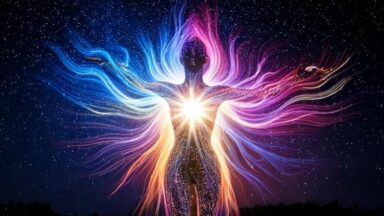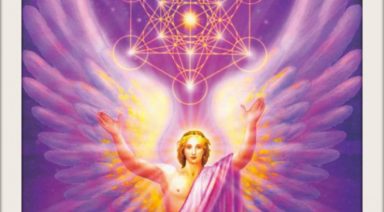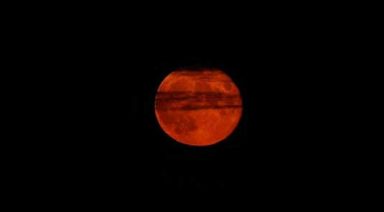Objective Spirituality
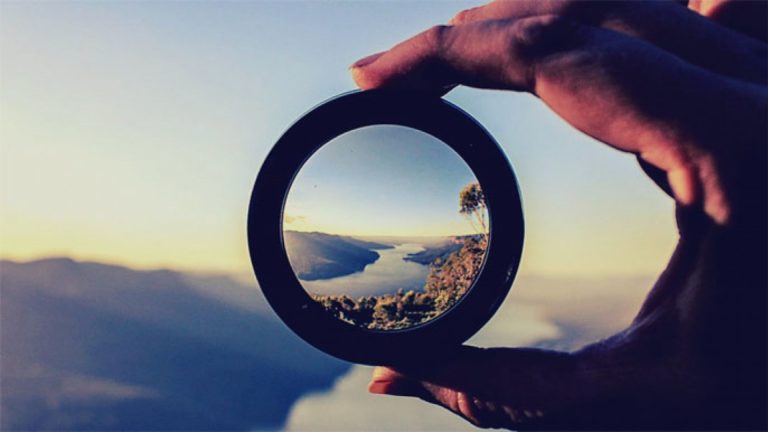
Well, it’s that time of year – the beginning of a new one – when it feels like changes for the better may actually be possible. When it seems like there may be something we can do differently, some way we can improve things a little. Perhaps it’s just a convenient time to make promises to ourselves – New Year’s Resolution time. It doesn’t necessarily mean we’re going to change anything, does it? But what if, with no huge effort on our part other than just a little shift in our point of view, we may dramatically change practically everything for the better? What if we could give ourselves a whole new orientation that would simplify and clarify our experience of life?
My best resolution may be to leave my body (again).
Self-Created Obstacles
Most of our problems, most of the things we wish we could change for ourselves, are obstacles that we’re usually creating ourselves. We all know that already. Problems that pop up again and again and prevent us from reaching what we want or being what we’d like to be. But what might those obstacles look like if they weren’t right in front of us again, blocking our view and dictating our direction? What if we saw them from across the room? Or could look down on them, like a bird looking down from above? They probably would look like nothing much because, in truth, they usually are nothing but the constructions of our human minds.
Our human minds are very insistent mechanisms. They want us to believe everything they say is true. They want us to believe that we are our thoughts. But we’re not. We’re something else. Otherwise, how could we notice how crazy our thoughts can be? How could we say to ourselves I don’t even want to think about that and then not think about that?
You Are Not Your Thoughts
In Hinduism, there is a Sanskrit word sakshi which simply means the witness and it’s a simple idea. It’s an idea that you can assume as your own, because it’s about who you really are – apart from the demands of your rambling thoughts. Sakshi can suddenly shift your perception – your perspective – because it’s the witness that pays little or no mind to your mind. It applies no labels or judgments to what it observes. It’s the simple, pure awareness that looks upon all things with a graceful acceptance, with an objective compassion, as an intuitively analytical eye. Imagine being so cool! Now imagine it a little harder…
I had the mixed (but good) fortune of surviving multiple near-death experiences, and the first was in the classic out-of body motif. I looked down on the auto wreck and witnessed my own body, unconscious and apparently lifeless. Naturally, I suggest you avoid this scenario, but it was instructive. When I think about it now, I engage my memory, but I also engage my imagination – and you can do that, too.
Accessing the Sixth Sense
Imagine yourself outside of your body, being your pure self, unencumbered by the insistent designs and definitions of your mind. From there, you can look down on the limiting definitions your mind imposes on the huge potential of life; the power that’s so easily handed over to your old fears. From that point of view as the objective spiritual entity that you actually are, the world looks much simpler, much clearer. We experience what in Latin is called sub specie aeternitatis, the actual eternal nature of our pure self. The aspect of being that you may think of as an intuitive sixth sense and as a real, spiritual quality that we all as members of the human species possess.
When you identify yourself at that level, where your inner self and the rest of the universe are unified, the problems and obstacles of your life on Earth carry much less weight and power. For example, the guy at work who’s always in your face loses the label antagonist and is observed as simply demonstrating his need to express the demands of his own experience to anyone and everyone – not just to you. In fact, much less seems like it’s happening to you. It’s only happening for you, and because it must.
Becoming a Disembodied Spirit
With this simple change in perspective, you immediately gain a tolerant and empathetic consciousness, an acceptance of people as they are – and of the world – as it is. You are freed from personal expectations because you see them as simply part of the whole, as an inconsequential expression of the moment. This allows you to bring to each moment, and to the world, what you alone can bring to improve things as they are. You no longer have a horse in the race, because you’re watching the race from above with the objectivity of a disembodied spirit. Life becomes more easily acceptable. You can see the shape of every problem, so there’s no problem too large to be overcome.
This condition is a lot like Buddha Mind or Christ Consciousness – in which experiencing a little of either puts you in pretty good company and immediately bestows upon you a whole new definition of success.
A Tourist on Earth
You needn’t be concerned that you may become too detached from your own life or lose the passion you feel you need to inspire yourself. Your new point of view allows you to see your attachments and passions in a much truer context so you may engage them more accordingly. With the spiritual objectivity of sakshi, the size, shape and even origins of your personal obstacles become more apparent so you can see how they’ve fit into your past and how they can be dealt with more effectively as they pop up now. You engage your life as a whole – past, present and future to identify what works, what doesn’t and whom you would like to become.
Imagining that you’re up in the sky witnessing your body and mind (and everyone else’s) actually plants your feet more solidly on the ground. It empowers your actions, your effectiveness and your compassionate consciousness to show up for life with a simpler, clearer presence. Any responsibility can be met. Any obstacle can be dealt with – including those potential catastrophes that may lie just ahead of us all.
In Logion 42 of The (Gnostic) Gospel of Thomas, a rather Zen-like Jesus says, Be passersby, which could certainly stand in for the compassionate spiritual objectivity I’m suggesting – the slightly detached, fully engaged kind of tourist-on-Earth quality that can change our messy struggles into our empowering purpose.
For me, it may be summed up as a New Year’s resolution: I resolve to be a responsible, open-hearted, objective, compassionate witness of – and entirely engaged participant in – the remarkable, indescribable magic of life on this beautiful Earth.
To him who holds in his hands the Great Image (of the invisible Tao), the whole world repairs. – Tao te Ching, 35
Light Beings and Spirit Energy: How You Created the Universe
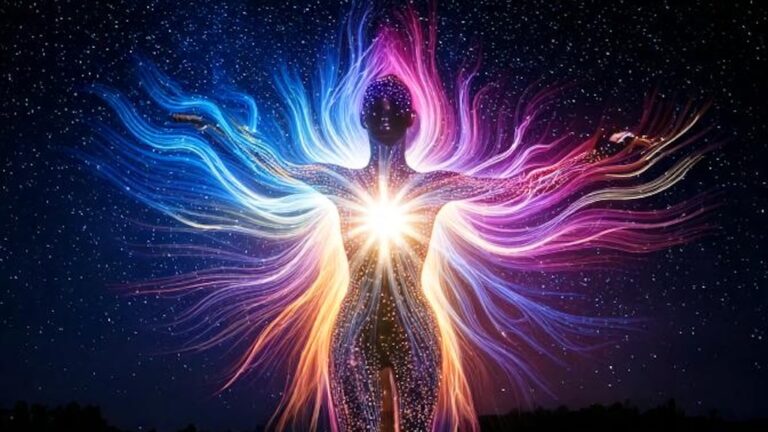
In some spiritual practices, “being the light” signifies offering hope, kindness, compassion, and encouragement to others in times of darkness. It also involves recognizing and celebrating the beauty and goodness in the world around us. Such acts of illumination are aspects of what many consider to be light beings—entities or energies that embody the purest forms of light and spiritual energy. This guide explores the concept of light beings and their significant role in shaping our universe and personal experiences.
What Is a Light Being?
Light beings are considered the ethereal architects of all creation, infusing their essence into every matter, which binds and energizes existence itself. This essence is known as spirit energy, pervasive in everything from the most grandiose celestial bodies to the simplest earthly elements.
Types of Light Beings:
- A Collective Consciousness: Often, light beings are viewed as a collective consciousness, a unification of energies that transcends individual existence. This collective operates at a high vibrational frequency, guiding and influencing the evolutionary paths of less developed consciousnesses across the cosmos.
- A Lightworker: Lightworkers are individuals among humans who awaken to their purpose of spreading light. They actively work towards raising their vibrations and those of others to foster love, harmony, and peace on Earth.
- A Luminous Being: Typically, a luminous being is seen as an advanced spiritual entity that has transcended the physical realms. These beings are pure energy, often perceived as glowing or radiant, and are thought to exist primarily in spiritual dimensions.
How to Become a Light Being?
Becoming a light being involves elevating one’s spiritual vibration through various practices such as meditation, mindfulness, self-reflection, and acts of kindness. Engaging in activities that align with higher spiritual frequencies—such as healing, teaching, or creating art with intention—can facilitate this transformation. It’s a journey of internal development that emphasizes connection to the universal source and all living beings.
Are Humans Light Beings?
While all humans possess the potential to become light beings, the transition involves a conscious choice and effort to evolve spiritually. Humans become light beings in the truest sense when they achieve a level of spiritual awareness and purity that allows them to transcend their physical limitations and fully embody their divine essence.
What are the Characteristics of a Light Being?
Light beings are marked by several distinct traits:
- Empathy and Compassion: They possess a profound capacity for empathy, often feeling deeply connected to all forms of life.
- High Vibrational Frequency: Light beings resonate at high frequencies, which manifest as a presence or aura filled with peace and positivity.
- Wisdom and Understanding: They hold immense knowledge and understanding of the universe’s workings, often providing guidance to others.
- Non-Attachment: True light beings are not bound by material desires or ego-driven goals. They operate on a plane of selflessness and service.
- Spiritual Abilities: Many light beings can manifest spiritual abilities like healing, telepathy, or clairvoyance, used for the greater good.
By fostering these characteristics and intentions within ourselves, we align closer to becoming light beings, contributing to the collective energy that shapes the cosmos.
Instinct is a contemplated thought, and the thought process is the dividing line between what is and what isn’t soul material.



